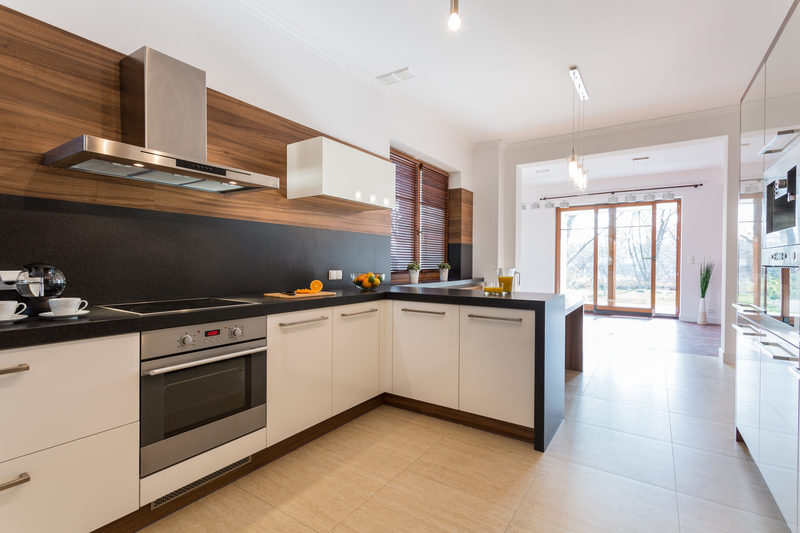DIY Piano Moving Myths Debunked by Experts
Moving a piano might seem like a manageable task for the average do-it-yourself (DIY) enthusiast, especially when equipped with determination, a few friends, and some muscle. However, misconceptions about DIY piano moving abound, leading to unnecessary damage, injury, and costly repairs. In this comprehensive guide, we expose and discuss the most common myths surrounding DIY piano moving, with advice and insights straight from professional piano movers and industry experts.

Why Piano Moving Is Uniquely Challenging
Pianos aren't just heavy; they are delicate, intricate, and unexpectedly complex. An upright piano can weigh anywhere from 300 to 800 pounds, while grand pianos can tip the scales at 1,200 pounds or more. Beyond their weight, pianos contain thousands of moving parts, fine-tuned to produce precise sounds. Even minor bumps or incorrect handling can cause expensive internal or external damage.
- Upright pianos: Tall, thin, and top-heavy, increasing the risk of tipping over.
- Grand pianos: Large, oddly shaped, and often require disassembly for relocation.
- Antique pianos: May have brittle internal components and fragile finishes.
While you may be tempted to tackle the task yourself, it's critical to separate fact from fiction on DIY piano moving. Here's what the experts have to say.
Top DIY Piano Moving Myths Debunked
Myth 1: "It's Just Heavy, Not Complicated"
Reality: Many assume that moving a piano is just a matter of lifting a heavy object, similar to a sofa or a refrigerator. Professional piano movers know this couldn't be further from the truth. A 600-pound upright piano contains delicate hammers, strings, pedals, and more--any of which can be jarred, bent, or snapped by improper handling.
Expert Insight: Unlike furniture, pianos are finely crafted musical instruments. Mishandling the internal mechanism or the exterior finish can cause silent damage that may only become apparent once you try to play your piano in its new location. Some damages can result in costly tuning, repairs, or irreversible harm.
Myth 2: "A Few Strong Friends Are Enough"
Reality: While strong friends may help with moving boxes, pianos require more than muscle--they demand experience, coordination, and specialized equipment such as moving boards, ramps, and heavy-duty straps.
- Injury Risk: Piano moving is one of the top causes of injuries during household relocations. Without proper technique and protective gear, movers run the risk of crushing injuries, strained backs, and even broken bones.
- Liability: If a friend is hurt during the piano move, you could be liable for medical costs or damages. Professional piano moving companies are insured for this reason.
Myth 3: "Any Truck Will Do"
Reality: Standard moving trucks are rarely equipped to safely transport a piano, especially over bumpy roads or long distances. Proper securing, padding, and climate control are essential to prevent damage.
- Professional movers use trucks with locking mechanisms, shock absorption systems, and soft, non-slip surfaces.
- Climate control keeps the piano's wood, glue, and strings from warping, cracking, or swelling.
Expert Tip: If you must DIY, always use a vehicle or trailer with a lift gate, lots of high-density foam padding, and secure tie-downs. However, risks to the instrument's integrity remain high without professional input.
Myth 4: "Piano Dollies Make Moving Simple"
Reality: While piano dollies are a helpful tool, they are only part of the equation. Most amateur movers don't realize that:
- The wrong dolly can damage the piano's legs and frame.
- Pianos may need to be partially disassembled for safe transport.
- Dollies don't help with stairs, tight corners, or uneven ground.
Professional Insight: Moving a grand piano requires removing the legs, pedal lyre, and sometimes the lid. Even upright pianos are at risk of damage if rolled over thresholds, sidewalk cracks, or when transitioning between floor types.
Myth 5: "Tuning After the Move Will Fix Everything"
Reality: Piano tuning can only correct the pitch and tension of the strings--it cannot repair physical or mechanical damage that may have happened during a DIY move. If pins, hammers, or the soundboard are damaged, only expert restoration can help.
Pro Tip: Always allow a professional piano technician to inspect your instrument after any major move, and avoid playing it until the assessment is complete.
What Makes Professional Piano Moving Different?
1. Specialized Equipment
- Commercial-grade moving boards and dollies to support weight across the whole instrument.
- Custom straps and harnesses designed for fragile finishes.
- Padded covers and shrink-wrap to protect from nicks, chips, moisture, and dust.
2. Trained, Experienced Movers
Professional movers study how each piano type is constructed, the physics of balance, and the safest ways to handle obstacles like tight staircases or elevators. Their hard-earned expertise means less risk to both piano and movers.
3. Insurance and Peace of Mind
Hiring pros means your investment is protected by insurance in case of unlikely damage or loss--something DIY piano moving can't offer.
Other Frequently Asked Questions
Q: Can't I Just Slide My Piano Across the Floor?
Never slide a piano, even on its casters. Casters are mostly decorative and can break or damage hard floors and carpets. Sliding a piano can misalign internal components and lead to costly repairs.
Q: Is It Necessary to Disassemble a Piano to Move It?
Grand pianos almost always need partial disassembly, including removal of the legs, pedals, and music rack. Upright pianos typically do not, unless moving through extremely tight spaces.
Q: How Should I Prepare My Home for Professional Piano Movers?
- Clear the pathway of all obstacles--area rugs, cables, furniture, toys, and pets.
- Measure doorways and hallways ahead of time.
- Discuss stairs, tight spots, and parking access with your mover in advance.
- Protect floors at both the departure and destination locations.
Q: How Much Does Professional Piano Moving Cost?
Cost varies by distance, type of piano, number of stairs, and need for disassembly. Expect rates from $150 for a local upright move, to $800+ for grand pianos or long-distance relocations.
Consequence of Believing DIY Piano Moving Myths
Damage to Your Instrument
- Scratches, dents, and broken keys are common with amateur moves.
- Internal damage (to the action, soundboard, or bridges) may require costly repairs or compromise sound quality.
Personal Injury
- Back injuries and crushed fingers are frequent risks.
- Accidents involving stairs can cause even more severe injuries or property damage.
Loss of Resale Value
- Visible or structural damage reduces your piano's resale worth and may void manufacturer warranties.
How to Safely Move a Piano: Expert Tips
If hiring professionals isn't feasible and you must attempt a DIY piano move, consider these guidelines for the best chance of success:
- Enlist at least four strong, experienced helpers who can follow instructions and communicate well.
- Equip yourself appropriately: moving straps, sturdy gloves, steel-toed boots, and a locking piano dolly.
- Remove all obstacles from the planned path before you begin.
- Wrap the piano in thick blankets and secure with tape or shrink wrap--never apply adhesive directly to piano surfaces.
- Use ramps for stairs, never attempt to lift a piano piecemeal up or down steps.
- Keep the piano as upright as possible--tilting too far can break legs or misalign internal components.
- Drive slowly if transporting by vehicle, and cushion all sides of the piano within the truck or van.
- Retune and inspect the piano after the move, and contact a technician at the first sign of trouble.

Conclusion: Trust the Experts--Leave Piano Moving to Professionals
Moving a piano is more than just another heavy-lifting job. As alluring as a DIY piano move may seem, the risks far outweigh the perceived savings. Professional piano movers combine specialized know-how, equipment, and insurance protection to safeguard your cherished instrument and your personal well-being.
If you truly care about the music and memories your piano holds, trust those trained to give it the careful handling it deserves.
Additional Resources
- Find local piano movers: Piano Technicians Guild
- Learn about piano maintenance: Steinway & Sons - How to Care for Your Piano
- Piano insurance and liability tips: MusicPro Insurance
Share this article with friends considering a DIY piano move--save a piano, and maybe a back, today!